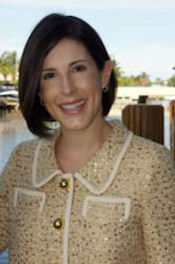Bed bug jobs require a toolbox approach, meaning it almost always takes more than one product (repellent, nonrepellent, liquids, dusts, monitors, etc.) and more than one method (sanitation, heat treatment, steam, residual chemical, fumigation, etc.) to achieve control of an infestation. There’s no guarantee a homeowner won’t reinfest his home with bed bugs again. This can happen easily in a number of ways: kids bring them home from college; they’re brought in on luggage from a recent trip; houseguests might bring them in; furniture purchased from thrift stores or garage sales can be infested; discarded infested mattresses are picked up and brought home. The list goes on.
Let’s look at sanitation and residual products for control. There are many products labeled for bed bugs from many different manufacturers, but a number of steps must be taken before any residual treatment is made:
Communicate with homeowners. This is the most important part. A pest management professional (PMP) can set homeowners’ expectations ahead of time and let homeowners know they’ll have responsibilities — chores, if you will — before and during treatment.
Inspect during first visit. Depending on the treatment method(s) chosen, it can take two to five visits to a home to gain control and verify it’s bed bug free. The first visit is usually the inspection. Afterward, homeowners must follow a prescribed list of activities, including:
- throwing out infested mattresses;
- hot washing and drying linens, clothes, drapes, etc.;
- hot drying of water-sensitive articles;
- packaging all cleaned items in clean trash or space-saver bags; and
- storing clean items far away from the infested room(s) before the PMP returns to make the first treatment.
Treat during next visit. The first treatment might involve dismantling furniture, removing outlet covers, lifting carpet edges, etc. The treatment can be made using a number of different products, followed by putting it all back together once the treatment is dry and completed.
Following up. After the initial treatment, a PMP generally should revisit the structure at 10- to 14-day intervals to reinspect and perform additional residual treatments if needed, always following the product labels regarding retreatment intervals.
Prevent reinfestation. Once an infestation is controlled, customers need to be aware of how their home was infested in the first place and avoid reinfesting it. Asking the homeowners where they might have traveled during the past several months helps them think about where they might have picked up the bugs, or if they brought home any furniture or mattresses, etc. In the case of apartments/multifamily dwellings, this can be difficult because the neighboring apartments might be infested, too. If all infested units aren’t addressed, the bed bugs can travel to a neighboring unit to reinfest it. Additionally, new tenants can move in nearby and bring an infestation with them. All isn’t lost, though. Residual products labeled for bed bugs can and should be used as part of a complete treatment to kill any newly introduced bed bugs.
Other considerations
If a mattress is infested, throw it away and don’t introduce a new one until after the infestation has been resolved. If a homeowner insists on keeping an infested mattress, and it’s treated with a properly labeled product, then it’s highly recommended a proper bed-bug-proof mattress encasement be placed on the mattress after any treatment has dried and never removed. The bed bugs can’t get out (if any eggs hatch inside) and more importantly, if the home is reinfested, a mattress and box spring with covers can be inspected easily because the cover doesn’t have many places for them to hide.
Some products have language on the label to treat mattresses (tufts, seams and edges, or even broadcast spray), while other products might not have any on-mattress labeling. Some products have interior residential crack, crevice and/or spot language on the label but don’t state mattresses. It’s always up to the licensed PMP to read the label of a product he intends to use. If there are any questions about the language, inquire with the state regulatory agency for its interpretation of the label.
Bed bug work is a specialized service, and not all PMPs should try or even want to become involved in it unless they’re willing to explore all that it requires to do a job thoroughly and correctly. There are other options in addition to residual products I haven’t covered, including heat treatment, steam and fumigation.
Happy bed bug hunting!

Leave A Comment